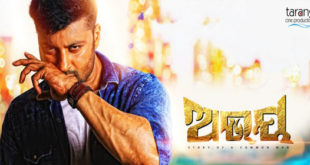Some of the finest cinemas in the world are produced in India. Among them, the very best of ethnic cinemas are produced in the land of Orissa. In its more than seventy years of journey since 1936 the Odia film has emerged into an industry that has undoubtedly created a space of its own in the highly competitive and volatile world of entertainment business. At a point of time when the Bollywood has started earning accolades worldwide the film industry in Orissa has grown up to become yet another heartland for showbiz in the eastern region of India besides Kolkata. Ollywood, as it is popularly known has not seen a red carpet welcome but the journey so far has been a bumpy ride leading towards a red carpet saga.
Presently decorated with many internationally acclaimed talents and state of the art technical infrastructure base the Odia film industry is ready to grow at par with the wealthy southindian counterparts. But way back in 1936 when the relentless efforts of a theatre enthusiast culminated with the first celluloid wonder in Odia, the result was obviously spectacular for Odias as well as others.
In 1936, few days after Orissa achieved its political identity, first Odia film ‘Sita Bibaha’ hit the silver screen on 28th April that year. Derived from a drama written by Kamapal Mishra the film was the brain child of Mohan Sundar Dev Goswami. Mohan Sundar with his deep knowledge in ‘Rasa Nritya’ banked on a story from the epic Ramayan of the marriage of Lord Rama and Sita. This paved the way for the Odias to have their own celluloid marvel while the art of film making had only spread from Mumbai to Kolkata and some parts of south India. If it was Dada Saheb Phalke who banked on mythological stories to give India its version of Lumiere’s magic, Mohan Sundar delivered the same to the Odias through Sita Bibah.
Sponsored by the Calcutta based Kali Film Studio the film starred Makhanlal Bannerjee and Pravabati as Ram and Sita respectively. Mohan Sunder Dev Goswami, Krishnachandra Singh, Adwaita Ballabh Mohanty and Narasingha Nandasharma were the co-artists. It was difficult to bring out the film in its final shape considering the socio economic condition of then Orissa. But Mohan Sundar was able to pump Rs 30000 and get a clearance from the Bengal Board of Film Certification for the first Odia film.
Ram Leela is a popular folk dance form in Orissa and Goswami’s artistic blend to the mythological story from Ramayan proved to be a crowd puller. The plot on spiritual ethos of the marriage of ‘Lord Ram’ with ‘Mata Sita’ decked with 14 songs appealed to the people of the ‘land of Lord Jagannath’. The songs and the mythological interpretations of a plot from the epic Ramayan were the handiwork of Mohan Sundar and Nandasharma. Being an advocate of ‘Rasa Leela’, another folk dance form of Orissa, Mohan Sundar had maintained the cultural and traditional beauty of the land in this film.
The two hour long movie first hit the silver screen at Laxmi Talkies in Puri. Then also it released at the epicenter of Odia art and culture, Cuttack at Cinema Palace. The film had created a wave within few days of its release. Mohan Sundar had got many touring assignments and in the absence of the theatre halls touring cinema camps drew a large crowd.
Blame it on the then socio-economic backwardness of the state or a lack of awareness about the appealing art of film making, only two films followed the suit almost after 15 years. As per some records a joint consortium of businessmen had produced two films between 1948 and 1950. But ity of these sources is not free from dispute. In 1951 one Ratikant Padhi produced the first Odia film with an English title ‘Roles Two Eight’.
Undoubtedly it was a slow pace of film making in Odisha but the Odia film was rich in artistic and aesthetic sense since its early days. A National Award for the film Shri Loknath in 1960 proves this. Directed by Prafulla Sengupta it was the eleventh Odia film and the first to win a President’s Silver Medal.
This decade saw the resurgence of a genius in the Odia film industry. The versatile talent was Prashant Nanda, who later went on to give many box office top grossers as a director for over decades. Prashant Nanda is the only film personality from Orissa who fall in line with the legendary Satyajit Ray in terms of versatility. In a career spanning more than fourty years this master craftsman of filmmaking has left an impression in every department. From direction to screenplay writing to acting to playback singing Mr Nanda has contributed to the Odia film industry in every possible form. For his seer spirit of giving box office grossers to Odia film industry, he is often referred in as Dada Kondke of Odisha, the grand old man of Marathi Cinema who gave many hits in Hindi and Marathi.
 Destination Odisha
Destination Odisha
